Click to view our Accessibility Statement or contact us with accessibility-related questions






PRODUCTS YOU MAY LIKE
Trending Posts in Audiophile

robbertwilson
Shop Premium Women Golf Shirts at ApparelnBags
Be the trendsetter on the golf course with our stylish collection of custom polo shirts for women. Whether you're swinging your way to victory or simply want to rock that sporty chic look, our polo shirts for women are here to make you stand out. Moreover, we understand that style and quality go hand in hand. That's why, from golf shirts for women to long sleeve polo shirts for women , we handpick the best products to ensure you experience comfort and durability. Also, our women polo shirts offer the perfect blend of style and functionality, so you can focus on your game without compromising style. So, grab your favorite polos today. Remember, it's not just a game; it's a lifestyle, and our polos will help you ace both!
Apr 25, 2024

SsButerbal
Ringing in PC38X's
I recently got this headset, and wow is it good. My only issue is when certain people talk on discord, I can hear a really high pitched ringing. I fiddled with a bunch of settings, computer audio and discord, and nothing seems to solve the issue. It is primarily if not all in my right ear only. Is there something wrong with my headset, or was that ringing always there I can just hear it cause the headset is THAT good? I haven't had any issues with any other application, though I have yet to test if I can hear the ringing on a different version of discord, say on my xbox instead of my pc. Only other issue I've had is occasional static, but I can't tell if it's from the headset or the show/game/etc.
Apr 24, 2024
itsamepe
Sennheiser PC37X randomly goes bad after disconnecting the cable ?
Greetings, Yesterday I was using my headset like normal with my macbook, just listening to music and on a call with people like usual, and the headset was perfectly fine. The stock wire that came with the headset is extremely long and yesterday it annoyed me very much that it kept getting tangled with itself, so I decided to see if the cable is replaceable. I pulled out the cable from the headset and saw the adapter, and looked online for a replacement. Upon plugging it back in, the audio sounded extremely muffled and washed out. Im not sure what I did wrong to make it mess up like that as I've always taken good care of it, ive had it for about 2 years and its always just been chilling on my desk, but anywho I thought the cable just went bad and ordered a replacement. The replacement came, and the issue is still persistant, so I am not sure what the issue is I've tried multiple different headsets and the issue is not with the port, and I also tried it with my windows laptop and...
Apr 23, 2024

MrChiSox
Big changes coming to my tiny little music room, I've recently purchased a new stack. Currently figuring out where to locate it all and ordering up the necessary cables, it won't be too long before I'm up and running. I am now the proud owner of a brand new stack. It's a European brand called Earmen. Amp, DAC, Streamer & Linear Power Supply. It won't be long!
https://www.youtube.com/watch?v=MB15yM4UptQ
Apr 23, 2024

Briankan
Recommendation for my next headphone set? I have Koss 95x
Hey all, What would you recommend I get next and why? I have Koss ESP-95x electrostatic massdrop headphones. These are my first and only audiophile set. I love them. I think my only real requirements is $500 or less for the headphones and that they have a little more low end. I don’t need thump but these are really light on lows…but the experience is still awesome. Also any recommendations on an amp? I only have my electrostatic thingy. I am using the Topping D50 DAC. thx!!
Apr 22, 2024

Simthaniel
Rigs
Modded headphones with qudelix at the core
When I received the Qudelix 5K, I had already modified a pair of Superlux HD-681 headphones. I previously soldered my own balanced connections to the drivers, providing multiple ways to connect and...
Apr 14, 2024

brothamike
A decent set of IEMs
I am in the midst of a 300 hour burn-in but, I will say I am enjoying how this set sounds so far. Before I received these which was btw late by a few weeks, I purchased a Sony/Kimber Kable MMCX...
Apr 12, 2024
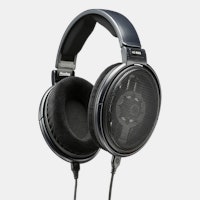
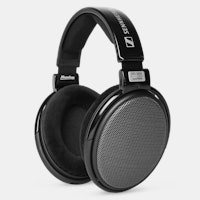

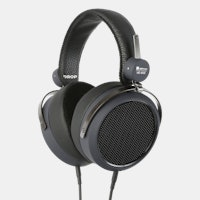
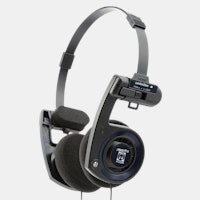
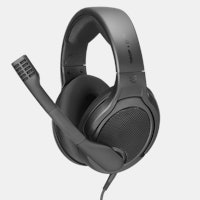
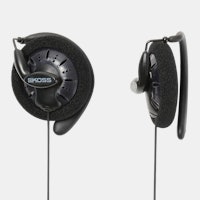
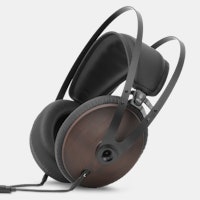
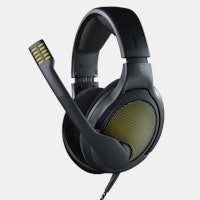
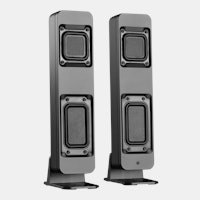
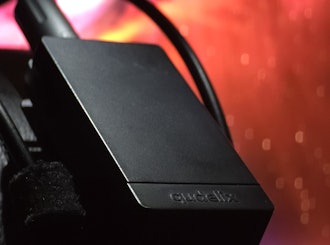
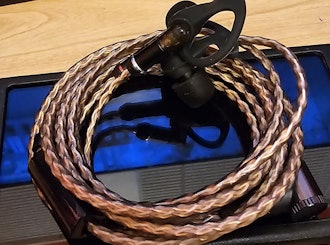
I think you got confused by the ideas of "asynchronous"(ASYNC) and WASAPI.Actually you don't have to use WASAPI to make ASYNC work."ASYNC" is is coded in Isochronous Endpoint Descriptor claimed by USB Device(in this case the XMOS chip).Unless something goes wrong,your driver will always use ASYNC no matter what AUDIO API is being used.
The "WASAPI" on the other hand,is just a way(API) your music player interact with the driver(like KS/ASIO).It does not affect how your driver communicate with your Device.They are in different layer.If use properly it can achieve low latency,or more important for the audio enthusiast the "Bit-Perfect" playback."Event mode" for WASAPI can reduce the chance of underrun buffer which can cause "pops" in playback(not the jitter in DAC clock,that's different),especially setting in low latency.
"Isochronous" is another story. In USB standard you have "Bulk/Interrupt/Control/Isochronous" endpoint. It's doesn't matter your device is "adaptive" or "ASYNC".A UAC device will always use isochronous Endpoint(defined in USB/UAC standard) to transport audio data.
There are some articles that may help you get better understanding about UAC and USB if you like :) [1]https://en.wikipedia.org/wiki/USB [2]http://www.beyondlogic.org/usbnutshell/usb3.shtml [3]Isochronous:http://www.beyondlogic.org/usbnutshell/usb4.shtml [4]UAC1:www.usb.org/developers/docs/devclass_docs/audio10.pdf [5]https://www.xmos.com/download/private/USB-Audio-Software-Design-Guide(6.6.0rc5.a).pdf
Which the way I understood it is that WASAPI event mode will rely on the device's clock, vs Push mode that uses the computer's clock. But the USB receiver has to support async transfer (which most of them do these days). What am I confusing this with?
It's very hard to explain the whole story.There're lots of buffer management involve in the whole the playback process and can easily cause confusion.I will try to simplify it as possibile.
Modern player are using so called "double-buffer" method.
Because the nature of modern OS,the timer is not so accurate(that's why they're using double-buffer).But If you set up enough buffer(i.e.high latency) it won't cause any issue or glitches in "push" mode as it has enough time for "timer jitter" tolerance("buffer" > "timer jitter"). If nothing goes wrong,the audio driver(or if you wish the "hardware") will see a continuously audio stream without any jitter and glitches.And pack the stream in it's own way(in this case the "UAC standard") communicate to the actual device. In this process another jitter will occurred and that's the "ASYNC" and another buffer mechanism comes to rescue.
But if you set the "buffer" too low(low latency),you can still get glitches(pops) when the buffer is done and new buffer isn't come in time because of "timer jitter"("buffer" < "timer jitter").
So now let's talk about the "event mode". In "event mode".The player do not sleep period of time.Instead when driver is finish one part of buffer it trigger the "callback" function registered by the player. So the player can wake up and write to the buffer much accurately,allow the user set a low latency(low buffer) without cause the glitches.
Actually the "event mode" is not the "WASAPI" invention.ASIO is default to use event-driven model and that's why ASIO can accomplish very low latency.
p.s.Note that low latency playback is relevant to real-time processing and editing only. It's completely useless for music playback; in fact, higher latency is better in this case as it gives better protection against glitching from buffer underruns. --http://wiki.hydrogenaud.io/index.php?title=Bypassing_Windows_Mixer
I don't see how jitter has anything to do with the buffer size of its not too large. Jitters do not cause pops, that is a buffer issue. Jitter is caused by an unstable clock on the receiver end (your DAC) when using WASAPI event, or caused by an unstable clock on your PC end when using WASAPI push.
When your PC does not send the right amount of data because of inconsistencies in either clock, jitter distortion manifests in the timing of the output audio. Lots of things can cause jitter, especially electrical interference carried by the USB cable even in async mode.
Okay looks like you didn't read the article I recommended previously.Most modern DAC completely use its own clocksource(include this one according to the description) and completely(edited:almost ) decouple from whatever the jitter in PC.The only reason it needs "ASYNC" is because it still a "soundcard" and have to "SYNC" to PC in the way that will not harm the sound quality.
The whole process about how it decouple is detail described in section 3.4.2 - 3.4.4 on https://www.xmos.com/download/private/USB-Audio-Software-Design-Guide(6.6.0rc5.a).pdf It's just a pure UAC standard&XMOS engineer genius. It completely has no relationship with the upper API your player software is used. You can't even find the word of "WASAPI" in the whole article.
Hope it can help you understand it:)
Ok let's not involve WASAPI for a moment, modern DACs only use its own clock source if async is used. PC clocks are still used for Sync mode. I don't know how a DAC can use its own clock when the PC uses its own clock to send audio data. It will not be able to synchronise.
Then we need to assume the clock on the DAC is really stable, but in the real world it never is. Sure it's better than the PC clock, but it's far from perfect.
There're a lot of component in your PC that running on different speed at different clock.Your HDD,your CPU,your memory etc.But they all able to run together and "SYNC" with each other because of the buffer&cache is exist everywhere in your pc.If they can't your pc will never run.
That's just the fundamental of computer science.
Most components in your PC has to "SYNC" each other no matter what the clock or speed they are running otherwise they cannot communicate with each other in real time.The most popular way to do that is buffer&cache with different asynchronous technology. In UAC world you have three way to "SYNC" with the PC: SYNC(They're same word but different meaning):Using the SOF packet to SYNC Adaptive:Using the sending rate to SYNC Asynchronous:Using buffer and feedback technology to SYNC(actually they have explicit and implicit feedback)
In other word,they are all for SYNC.Just different approach.If they're not for SYNC,you can pretty sure that your video won't sync with your audio.And you can't adjust your Player seekbar either even with "WASAPI event" or whatever.
And when a device is plug in,the PC will asked the device to claim ALL descriptor(include the Synch method supported by the device),after that there is no way to change it because it's hard coded. No matter what the PC has to follow it otherwise it wont work.[1]
Another example:In UAC1 they actually not recommended async mode because it's very hard to use one UAC1 "ASYNC" soundcard as input with another "ASYNC" one as real time monitor due to the nature of USB. In this case the PC has to do the real time SRC to make it possible for real time monitor(and harmful to the sound quality). Even in this case,PC still can't force one device change their mode to the "adaptive",that's just not possible without causing huge issue.
In UAC2 they introduce "clock domain" to deal with this issue but that is another story.
Overall,just as I said before.WASAPI has nothing to do with UAC and I already quote it out in the document.
But now let's do some "DIY". You can google the "Thesycon USB Descriptor Dumper" it's a freeware(make sure it has a valid digital signature and comming from offical website and agreed with their terms) and check it by yourself. At the time you plug in your DAC all USB descriptor of you DAC is displayed(included Synch method) and no matter what(even you didn't install the proper driver for your DAC) they won't change.
ps1.Actually in the previous version of this software(v1.8.3),it did not require you to reconnect you device and makes you can see these descriptor in real time. So you can select any playback API and find out those descriptor never changed.That's maybe more convincing.But anyway they just won't change by itself.
ps2.There are some other device(like your smart phone change the USB mode/some highend DAC which has physical selector for UAC1/2) can change their Descriptors.But it would require the device to do the USB reset and reinstall itself(defined in USB specification) and when it reset you definitely can check and see the new descriptor in this software,and your "Windows device management panel" will show a new device is installed.
ps3.Maybe when you have time to study it you can check the latest opensource UAC1/2 implements. I'm laid out the core functions of synchronize and playback so you don't have to read the whole codes: line 1088@snd_usb_handle_sync_urb http://elixir.free-electrons.com/linux/v4.13.2/source/sound/usb/endpoint.c line 1451@prepare_playback_urb http://elixir.free-electrons.com/linux/v4.13.2/source/sound/usb/pcm.c These codes are well commented and tells everything about UAC internal mechanism if you understand it.That's why I'm so confident.
That's it.I think no more explanation is needed:) [1]http://www.usbmadesimple.co.uk/ums_4.htm
When you talked about sync, it was the synchronization between devices. When I talked about sync, I was referring to the USB mode sync (vs adaptive, vs asynchronous).
I think I made a mistake assuming that WASAPI was somehow related to USB modes, this was based on my IRL experience - my current DAC is asynchronous, however it won't work properly if I don't use WASAPI Event, which is why I thought WASAPI Event enabled asynchronous mode. After reviewing results from the dumper, I realize now that this is a limitation of my device, and nothing to do with USB standards.
I can't really gain an appreciation just by looking at a few lines of code, thanks for the attempt anyway. A bit off topic - I'm always trying to encourage people to use Allman bracing, K&R was invented a long time ago when you could only display 10 lines of a code on the screen. Allman is cleaner, less error prone and easier to maintain.
My point on USB noise still stands, it's still a prevalent issue that can affect clock stability on the DAC.